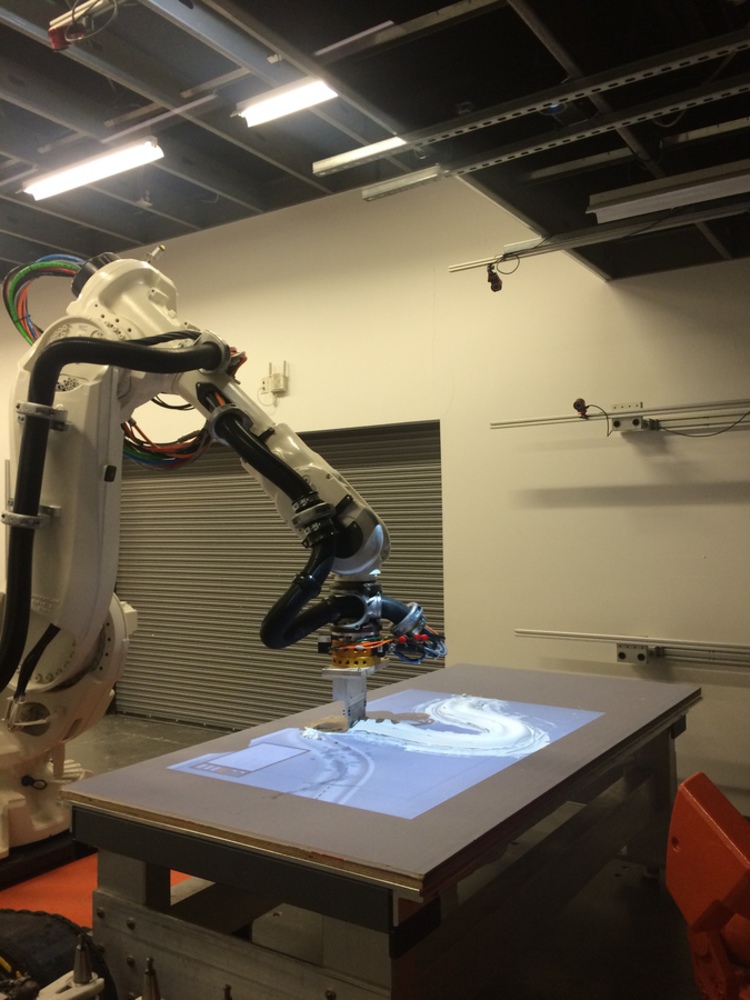While machine fabrication has made considerable leaps in capability and accessibility in the past decade, skilled human gesture remains essential to many of our most important endeavors: the body fosters a wealth of tacit knowledge vital to cultural, political, and economic dimensions of human life. This duality highlights the critical importance of approaches to Computer-Aided-Design and -Manufacturing that leverage human skills within the physical realm, in tandem with machine precision, scalability and variability within the digital realm. This project aims to formulate and put to test specific machine-human collaborative methodologies for fabrication that iteratively and rapidly flip back and forth between the physical and digital domains in order to harness the creative and efficient potentialities of both machine/digital and human/physical paradigms.
This particular demo was an experiment in capturing human natural human sketching skill and converting it to a rendered plaster form at a 1:1 scale. The user drew a baseline curve at scale on the table. The gesture was tracked via motion capture, with user feedback provided through a projected image on the same surface. The gesture was then converted to a robot program for creating the curved form via multiple passes over a single gauge of plaster.
This work was performed in the Digital Fabrication Lab in the Carnegie Mellon School of Architecture.
